













The magazine of the art-form of the photo-essay
“A free, really high quality photo-essay magazine. Fabulous!”
Stephen Fry. British actor, writer and film & documentary maker

May 2014 issue


by James Brabazon

A year ago this May, in the village of Al-Bayda, Syrian Government forces carried out the single most extensive,
verified act of killing of civilians with conventional weapons since the war began.
But who, save the families and friends of those who suffered that day, knows the name of even a single victim?
Silent victims are what repressive regimes crave most. The dead tell no tales, and even massacres as large as that in
Al-Bayda quickly become “unsubstantiated” or “alleged” – another piece of a propaganda puzzle to be questioned,
doubted, and then – hopefully, in the eyes of the killers - ultimately dismissed.
But if we can see and name and know the victims, their voices can be heard.
By discovering the identities of those who were killed, by linking pictures of those named victims to a map of the exact
locations where they lived and where they were murdered, and by cross-referencing eyewitness accounts of their
deaths, the disturbing videos and photographs that haunt the internet stop “purporting to show” evidence and become
documentary proof.
Naming the dead allows them to speak. And what we hear most clearly is their claim to justice.
At seven o'clock in the morning on May 2nd 2013, Syrian Government forces entered the village of Al-Bayda, an
opposition enclave nestled in the hills by the Mediterranean coast in the western governorate of Tartus.
Al-Bayda was a sleepy place. Not much happened there, and until last spring it was unremarkable except for one
defining fact: it was a predominantly Sunni village, entirely surrounded by pro-Regime Alawite and Christian territory.
But the Syrian Government didn’t consider Al-Bayda to be a threat. In May 2011 they’d already rounded up all the men
into the village square and then beaten many of them, to remind them that President Assad was in charge. Since then
the Regime had more or less left it alone. There was no permanent Syrian Army force there, no big checkpoint and no
fighting. Regime forces came and went as they pleased. No one attacked them.
The only function that Al-Bayda played for the opposition was to help smuggle out individual deserting Government
soldiers who had run away from their bases on the coast and were trying to reach rebel-held territory.
So when the Syrian Army arrived last May – to arrest a group of three Syrian Army deserters who were being hidden in
the outskirts of the village by supporters of the opposition to President Assad – no one could have guessed what would
happen next.
First, there was a shootout. The deserters and a group of around a dozen opposition fighters who went to their
assistance, local men with light weapons, opened fire on the Army. Residents said that later they saw the bodies of at
least a dozen dead Syrian Army soldiers – their corpses trapped in the burned-out remains of their ambushed vehicle.
Taking no chances, the Regime forces called in reinforcements. By 1 p.m. the fire-fight was over. The deserters had
either been killed, or had fled along with the opposition fighters up into the caves far outside the village. Any threat to
the Government forces had passed.
But then Government fighters massed around Al-Bayda: regular Syrian Arab Army units, uniformed National Defence
Force paramilitaries (the so-called Shabiha), and Syrian Army Special Forces operators.
From the outskirts where the skirmish had taken place, the Army and paramilitaries moved in. Along three axes, in
coordinated deployments, they swept through Al-Bayda, moving from house to house.
At 1.30 p.m. the killing began.
Men and women were separated. The “men” – which included teenage boys – were either executed immediately, or
marched to the village square to be killed en masse. Most were shot. Some were hacked to death with long knives or
cleavers. At least one young boy, Luqman al-Hiris, was beheaded, in front of his mother.
In the house of Mustafa Biyasi, thirty women and children were herded into one room and then executed – shot at
point blank range. Saffa Biyasi cuddled her baby boy, Hamza Biyasi. They were filmed later that night lying dead next
to each other, serene despite their injuries. Afnan Biyasi and another small child spooned each other on the bed they
were shot on, perhaps holding each other for comfort in the last moments before the bullets ripped through their tiny
bodies.
By 5 p.m. the massacre was over.
The Syrian Army had killed at least 169 civilians in four hours. The verified final death toll is likely to exceed 250.
Dozens of bodies were stacked up in the local cell phone shop and burned, making them hard to identify. Um
Mohammed, an eyewitness to the massacre, was able to identify the charred remains of her son only by the chipped
fingernail he’d broken as a boy.
The next day Government forces returned and burned Al-Bayda. The sleepy village which once had a population of
around 5,000 people was all but empty. Sunni refugees fled to rebel-held areas of Syria and then on to Turkey and
Lebanon. If the Government’s strategy had been to cleanse Al-Bayda of its Sunni Muslim residents then they were
successful: with the exception of a few elderly people too weak to leave, only the Christian quarter remains inhabited.
Thirteen members of the Fattou family, who tried to return during the holy month of Ramadan, were murdered in
their home by Syrian security forces on July 21st 2013.
What is almost as shocking as the eyewitness accounts of murder by uniformed Government troops is that the
massacre at Al-Bayda was almost entirely unreported in the mainstream media: a few short news pieces, a report and
brief overview in the Western press is really all the attention that Al-Bayda received. Despite a vast amount of
unverified web chatter, few people, it seemed, were interested in uncovering the facts of what was at that time the
war’s most tragic day.
“Sara” is a twelve-year-old girl who survived the massacre, and who found the body of her tortured and murdered
father. She was interviewed for this project. When asked if there was anything she’d like to say to the people abroad
who might see this film, she replied:
“The world should pay attention about what is happening in Al-Bayda. Why is everyone asleep? Why don’t they do
something? We had one nursing baby who died in his mother’s lap. What has he done? Did he overthrow the
president? People should stand up to them, to our enemies. You cannot just keep quiet. This is not right. They have
slaughtered all of us. They have emptied Al-Bayda. There is no one there anymore. It used to be called Al-Bayda –
the White Village. Now they call it Al-Sawda – the Black Village.”
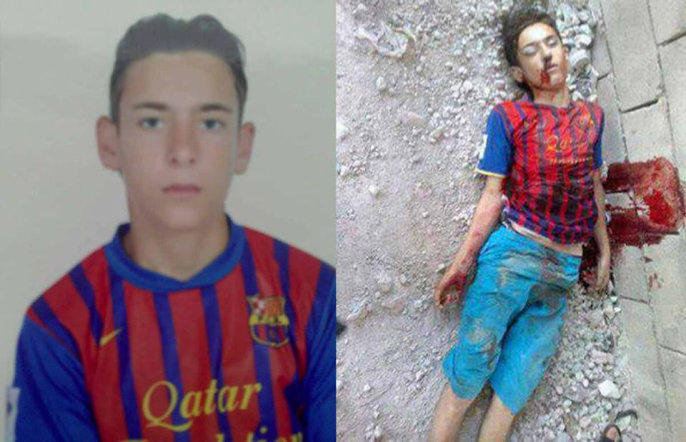
Ahmed Mohamed Othman - murdered in Al-Bayda 02 May 2013.
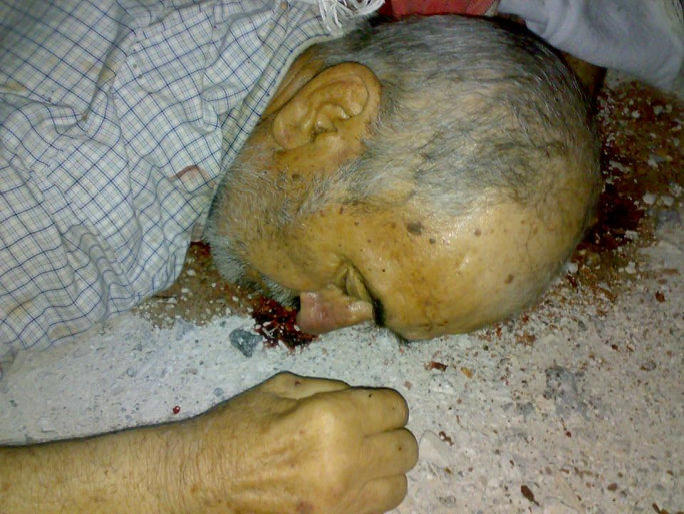
Warning: this article contains extremely distressing footage and images
Ahmed Mohammed Biyasi - murdered in Al-Bayda 02 May 2013.
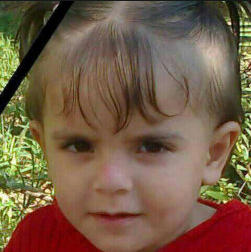
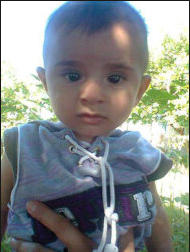
Afnan Abdul Manam Biyasi - murdered in
Al-Bayda 02 May 2013.
Muaz Abdul Manam Biyasi -
murdered in Al-Bayda 02 May
2013.
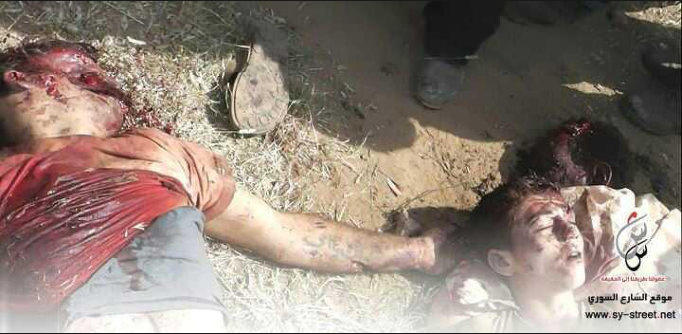
Ibrahim Saqr - murdered in Al-Bayda 02 May 2013.
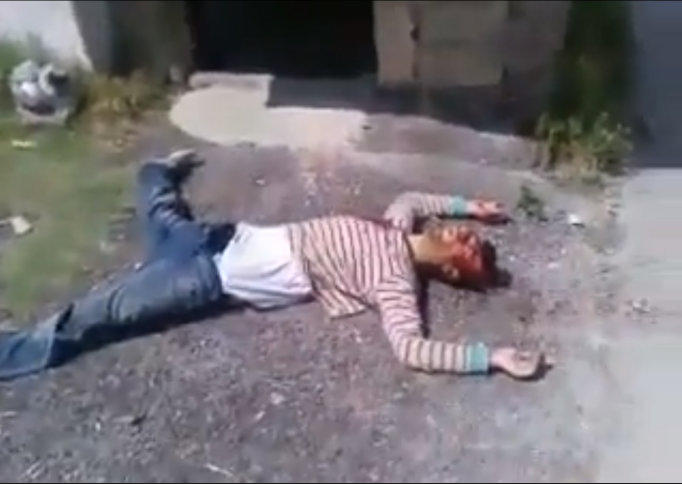
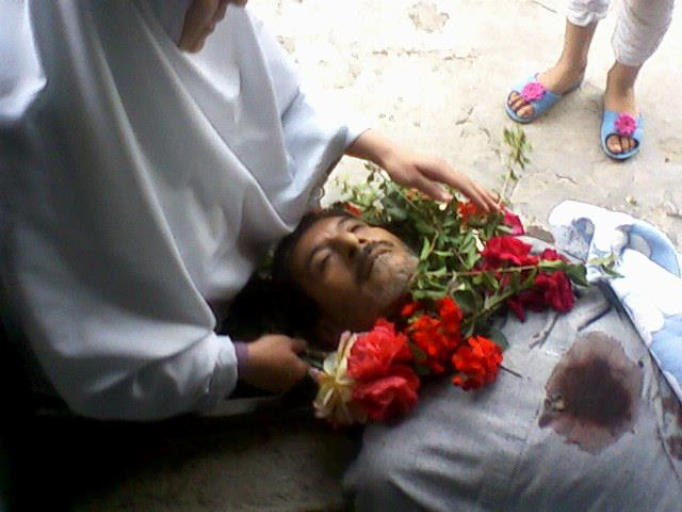
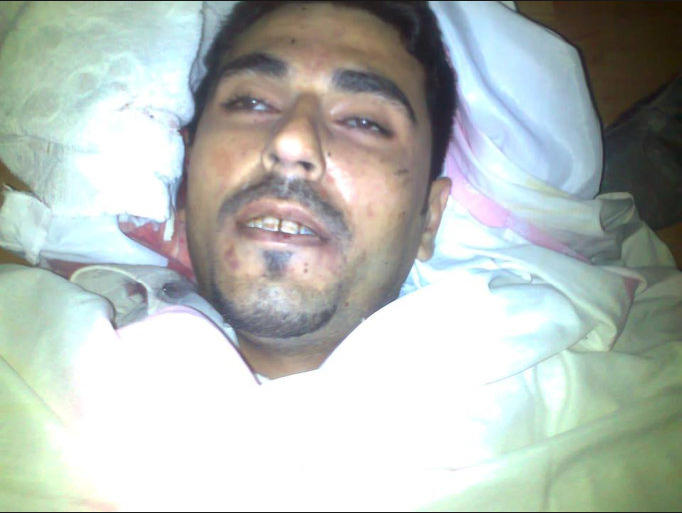
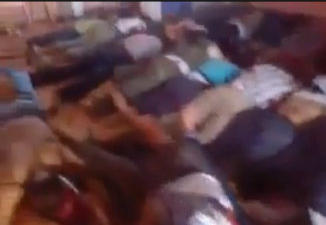
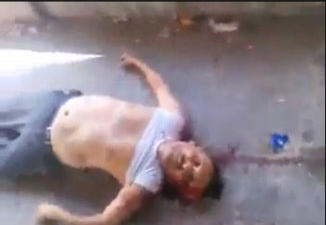
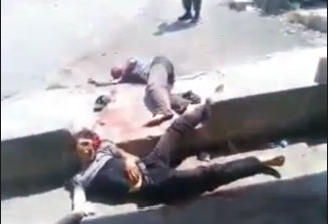
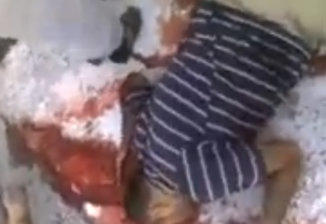
The names of the dead
Ibrahim Mohammad al-Shaghry Jamal Ismail Ali Jamal Ismail Khalid Ibrahim Biyasi Anwar Fouad Jaafar
Hassan Fouad Jaafar Abdul-Sattar Mohammad al-Qadi Abdul-Qadir Ahmed Hussein Ahmad Mohammad al-Shaghry
Mohammad Ahmad al-Shaghry Othman Ahmad al-Shaghry Maher al-Shaghry Mohammad Zaheir al-Shaghry
Abdul-Qadir Mohammad Taha Muhanad Mohammad Taha Ibrahim Mohammad Taha
Moustafa Abed al-Qadir Taha Mohammad Moustafa Taha Abdul Rahman Mustapha Taha
Maher Mohammad Qadur Usama Mohammad Qadur Hikmat Mohammad Qadur Mohammad Hikmat Qadur
Mohamoud Hassan Namoureh Mohammed Hassan Namoureh Hayat Yousef Taha
Ahmed Mohammad Biyasi Mohammad Ahmed Biyasi Salem Ahmad Khadam Zakariya Ahmed Hussein
Manar Kaamil Biyasi Yousef Suliman Yassein Mustafa Yousef Yassein
Karm Amr Suweid Omar Youssef Taha Khayr a-Din Youssef Taha Mohammad Yousef Taha
Shahadeh Mohammad Taha Mohammad Shahadeh Taha Maher Mohammed Taha Ahmad Shahadeh Taha
Yaser Shahada Taha Muyaser Shadahda Taha Mustafa Taha Abdul Rahman Mustapha Taha Mohamed Mustapha Taha
Omar Aziz Biyasi Omar Ahmed Biyasi Yusra Hussein Hamza Omar Biyasi Abdul-Raziq Shaghri
Usama Abdul-Raziq Al-Shaghri Abdul Khaliq Ahmed Shaghri Uthman Mustapha Suweid
Said Mustapha Suweid Ahmed Mustapha Suweid Mohamad Musapha Suweid Ali Mohamad al-Harith
Jameela Mustapha Qadour Jameela Munier Qadour Khaldiyah Hussein Marwan Ali Khalil Saffa Ali Khalil
Abdul Rahman Abdul Qader al-Shaghri Abdul Mun'am Abdul Qader al-Shaghri Mustapha Ali Biyasi
Aisha Abdul Qader Qadour Ahmed Youssef Mahmoud
Mohammad Ahmed Mahmoud Khalid Youssef Mahmoud Mohammad Ali Mahmoud Abdullah Mohammad Biyasi
Aisha Hussein Nasiba Abdullah Biyasi Raniya Abdullah Biyasi Samia Abdullah Biyasi Ahlam Abdullah Biyasi
Wala'a Abduallah Biyasi Ahmed Abdullah Biyasi Mohammad Abdullah Biyasi Saffa Ali Biyasi Abdullah
Mohammad Biyasi Aisha Mohammad Biyasi Sara Mohammad Biyasi Mohammad Biyasi Halima Mohammad Biyasi
Hamza Mohammad Biyasi Youssef Mohammad Biyasi Mustapha Youssef Biyasi Mohammad Yousef Biyasi
Sh'aban Ahmed Sh'aban Mustapha Ahmed Sh'aban Haytham al-Agha Ahmed Abdul-Rahman
Abdul Rahman Ahmed Wareed Mohamad Mustafa Da’bool Mustafa Mohammad Da’bool
Ahmad Hussein Jaafar Ahmad Shaaban Al-Mohammad Hassan Mohammad Othman
Abdul-Karim Mohammad Othman Ahmad Mohammad Othman
Mohammad Taha Safi Mohammad Taha Khalid Mohammad Taha Mohammad Khalid Taha Ahmad Ali Hussein
Ali Ahmad Hussein A’laa Ahmad Hussein Mu’iin Ali Khalil Mustapha Hussein Qadour Mohammd Hussein Qadour
Jalal Hussein Qadour Hadif Hussein Qadour Mustafa Mohammad Qadour
Fatima Mustafa A’soom Faris Musafa Khalil Mohammad Abdul Rahman Ismail
Sana Mohammad Ismail Walid Mohammad Hanood Mohammad Hanood Mustafa Ahmad Khalouf Sha’ban
Mohammad Abdul-Rahman Ismail Mustafa Omar Hussein Majed Omar Hussein Az Al-Din Saeed Biyasi
Ahmad Mohammad Qadour
Abdul-Qadir Mohammad Qadour Othman Ahmad Othman Ahmad Mohammad Othman Hussein Mohammad Ismail
Umar Mohammad Al-Sheikh Ali Mohammad Al-Sheik Majid Mohammad Al-Sheikh Amar Mohammad Al-Sheikh
Mohammad Khalil Khalil
Ghassan Mohammad Hussein Mohammad Abdul-Aziz Hamoudeh Mohammad Abdul-Aziz Hamoudeh
Mu’iin Abdul-Aziz Hamoudeh Ahmad Ali Saqr Ahmad Mustafa Saqr Ibrahim Mustafa Saqr Osama Mustafa Saqr
Ahmad Souweid Safwan Ahmad Souweid Manal Mohammad Saqr Mu’aaz Abdul-Manaam Biyasi
Amneh Abdul-Minaam Biyasi Aiman Abdul-Minaam Biyasi Afnan Abdul-Minaam Biyasi
Ibrahim Hamed Mustafa Al-Shaghri Ahmad Ibrahim Al-Shaghri Lawi Namoura Mazhar A’thoom
Mustafa Sab’e Khalid Sab’e Ala’a Ismael A’bid Ahmed Mohammad A’bid Ahmed Walid A’bid Ahmed
Yusuf Yasin Adnan Yusuf Yasin
Luqman Yusuf Al Haras Abdirahman Ahmed Hawash Ziad Ahmed Hawash Mohammed Ahmed Hawash
Ali Ahmed Hawash Ahmed Ahmed Hawash
Al-Bayda: Anatomy of a War Crime - Credits:
Field Producer
Abdulkader Al Dhon
Graphics
Trainor Davies Design
Film Editor
Tariq Sheik
Assistant Producer and Second Camera
Sasha Joelle Achilli
Filmed, Produced and Directed by
James Brabazon
Al-Bayda: Anatomy of a War Crime – the Channel 4 News film directed by James Brabazon
Syria: Mass Executions by Government Forces - Human Rights Watch report on Al-Bayda
Hikmat Qadur - murdered in Al-Bayda 02 May 2013.
Karam Umr Suweid - murdered in Al-Bayda 02 May 2013.


Faris Halai - murdered in Al-Bayda 02 May 2013.
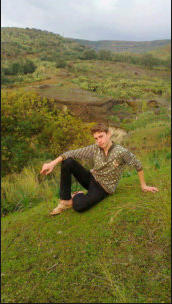
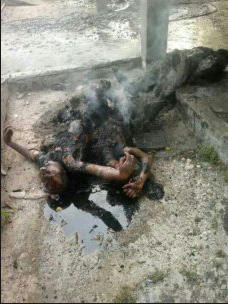

Othman Ahmed al-Shaghri and Mohamed Ahmed al-Shaghri - murdered in Al-Bayda 02 May 2013.
Unnamed dead - murdered in Al-Bayda 02 May 2013.
Unnamed dead - murdered in Al-Bayda 02 May 2013.
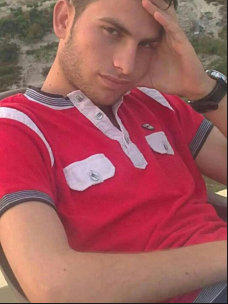


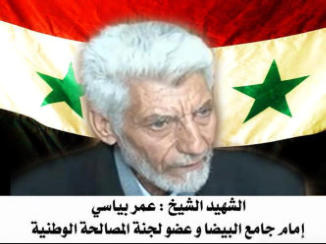
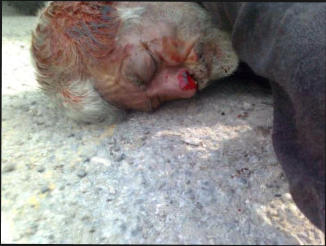
Umr Biyasi - murdered in Al-Bayda 02 May 2013.
Unnamed dead - murdered in Al-Bayda 02 May 2013.
Unnamed dead - murdered in Al-Bayda 02 May 2013.









